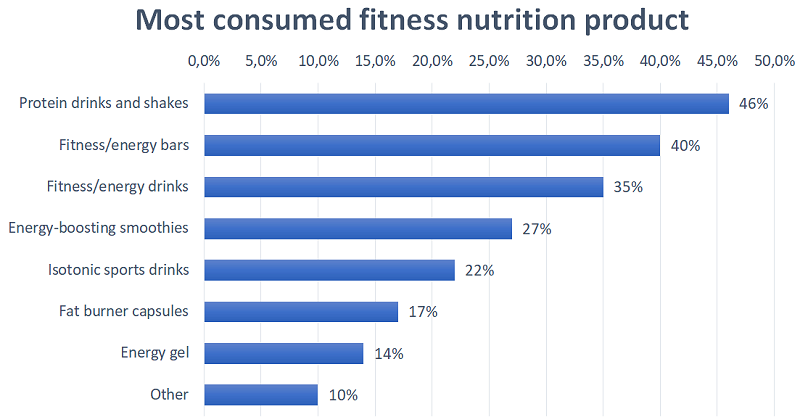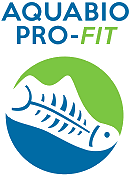Current fish protein products that can be found for human consumption are:
Fish Protein concentrates
Fish Protein concentrates (FPC) are defined as any stable fish preparation intended for human consumption where the protein is more concentrated than in the original fish source. The protein content in such products typically is in the range of 65 to 80%. The Food and Agriculture Organisation of the United Nations (FAO) defines FPC according to three classifications:
- Type A: A virtually odorless and tasteless powder having a maximum total fat content of 0.75 per cent.
- Type B: A powder having no specific limits as to odor or flavor, but definitely having a fishy flavor and a maximum fat content of 3 per cent.
- Type C: normal fish meal produced under satisfactorily hygienic conditions.
Type A products come in a powder form that can be incorporated in other foods such as bread, biscuits, soups, and stews at a level that does not affect their normal taste and texture. Good results have been obtained in macaroni products, milkshakes, dietetic fruits, and cereals. Examples of protein rich products from salmon filleting value chain can be found in here: more
Fish protein hydrolysates
Fish protein hydrolysates are proteins that are enzymatically broken into peptides of various sizes. The hydrolysis process makes the protein more digestible by increasing the solubility of peptides. However, the hydrolysis process releases bitter compounds, ascribed to small peptides containing hydrophobic amino acids, which makes their consumption difficult. Having said that, however, it has been shown that fish protein hydrolysates can be incorporated into food products and used as flavour enhancers.
Bioactive fish peptides are specific protein fragments that have a positive impact on body functions or conditions and may influence health. They are isolated from the protein hydrolysates and consist of between 3 and 20 amino acid residues, with their biological activities based on molecular weight. There are not many products containing bioactive peptides of fish, but those that exist are more related with anti-stress function. While there are products on the market, their health claims have not been approved by EFSA (European Food Safety Association). (more)
Other bioactive compounds
Other bioactive compounds that are found in fish include terpenoids, steroids, enzymes, alkaloids, fatty alcohol esters and glycolipids.
Commercial products
As mentioned above, the number of fish protein products on the market has been limited in part due to their strong fishy smell and taste. However, there are some companies that sell various products, in capsule, powder and paste form, as shown in Table 1.2.1. It is worth noting that some companies refer to the fact that their products have a neutral smell and taste (Originates Biomega), while others highlight the fishiness and flavour of the products (Essentia and Biomega). Moreover, Firmenich, a major player in the flavour and fragrance industry, have recognised the importance of sustainable sources of protein, which includes marine ingredients, and the role they play in health and wellbeing. As a result, they have made a commitment towards the development and commercialisation of new ingredients from sustainable resources, such as proteins from fish side streams.
| Company | Size | Country | Market distribution | Product name | Form | Description |
|---|---|---|---|---|---|---|
| Aroma Ltd | SME | New Zealand | BTB | Protein-PLUS | Powder | From 100% fish meat, processed at low temperature freeze-drying tor to preserve key protein components. Dietary supplement. |
| Biomega | SME | Norway | BTB | Biomega® | Powder | Contains small proteins, peptides and amino acid form Salmon. Neutral taste and smell. Beneficial effects on blood pressure |
| Essentia | SME | Denmark | BTB | peptides | Paste | Flavour based on meat and fish proteins |
| Huzhou Zhenlu Biological Products | SME | China | BTB | Biomega® | Powder | Contains small proteins, peptides and amino acid form Salmon. Fishy taste and smell. |
| Copalis | SME | France | BTB/BTC | Salmigo | Powder | Marine bioactive peptide which helps to reduce fat deposition and to improve restitution. |
| Copalis | SME | France | BTB/BTC | Nutripeptin® | Powder | Marine bioactive peptide which helps to reduce fat deposition and to improve restitution. |
| Firmenich | Large | Switzerland | BTB | Protizen | - | Marine bioactive peptide which helps to relief stress |
| Essentia | SME | Denmark | BTB | Probase™ | - | Flavour based on meat and fish proteins |
| Firmenich | Large | Switzerland | BTB | - | Powder | Hydrolysed protein powder |
| Hofseth Biocare | Large | Norway | BTB | Progo | Capsules | Hydrolysate salmon protein with 98 % of digestibility. For athletes to recover muscle mass after sport. |
| Huzhou Zhenlu Biological Products | SME | China | BTB | Fish protein powder | - | Fish protein powder. Suitable for human consumption, to achieve beneficial effect on skin. |
| Originates | SME | USA | BTB | Romega® | - | Herring caviar protein with neutral smell and odour. Contains EPA and DHA |
| Seagarden | SME | Norway | BTB/BTC | Fish Complex | Capsules/Powder | Fish powder from 3 types of fish. Produced from whole fish. |
| Seagarden | SME | Norway | BTC/BTB | Cod Protein | Capsules/Powder | Cod protein from wild-caught cod filets. Fishy taste and smell. |
Market size of fish protein and hydrolysate products
Information regarding the market size of the fish protein and protein hydrolysates industry was difficult to find, in part due to the fact that there are not many products on the market, but also that the market reports often consider the protein and/or hydrolysates markets as a whole. The global protein ingredients market size, which includes protein from animals, fish and plants, was valued at US$25.62 billion (approximately €22.1 billion) in 2016 and is expected to witness a Compound Annual Growth Rate (CAGR) of over 7% from 2016 to 2025. In 2015, the USA was the major producer and consumer of protein products and this market is expected to continue growing, favoured by a change in consumer behaviour, resulting in an increase in protein intake instead of fat. Consequently, this has been translated into new products, such a functional foods or sport beverages creation. Europe is the second largest market but is less developed for protein products than in the USA. This is most likely due to cultural reasons but also a lack of consumer knowledge about the function and benefits of protein.
The market for protein products is driven by various factors, such as obesity and sports. Proteins may be substituted for fat and sugar in food products, which thus can be marketed to obese people as a nutritional and healthy product that may also help in reducing weight. The demand for such products is expected to grow as the levels of obesity continue to rise. Furthermore, there is an increasing consumer interest in protein products due to the evidence that they support body building (see Figure 1.2.1) and keep muscles healthy and active as people age (more)
Barriers and opportunities
As mentioned previously, the market for fish proteins and protein hydrolysates is currently quite limited. This is in part due to smell and flavour, which constitute a major barrier for these products. Moreover, other protein sources, such as whey, soy, and wheat, are well consolidated and thus, present an additional barrier for introducing new protein sources on the market. Finally, it is apparent that consumers do not fully understand the function and benefit of proteins, which has also meant that the market has mostly been limited those who are more conscious of health and fitness.
Despite these barriers, there are also several opportunities for fish proteins to have a stake in the protein market. The fact that there is a relatively untapped source of proteins from fish side streams means that there is the possibility to increase the current protein production without the need to extend agriculture or aquaculture practices. This not only offers a more sustainable source, but also contributes to a circular economy. Fish proteins are also a nutritious source of amino acids, ensuring that consumers can obtain all the essential ingredients needed for their body to function. Moreover, bioactive peptides have beneficial functionalities and can be used as antioxidants, antimicrobials and anti-stress ingredients. Enzymatic hydrolysis also helps to reduce allergenicity, thus creating hypoallergenic hydrolysates. This may be of particular interest for consumers who have allergies or intolerances to other protein sources, such as whey, soy and wheat.







